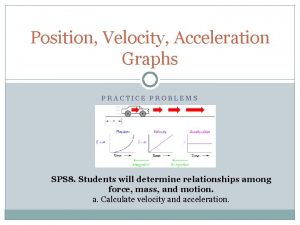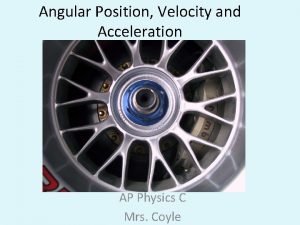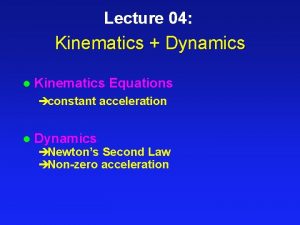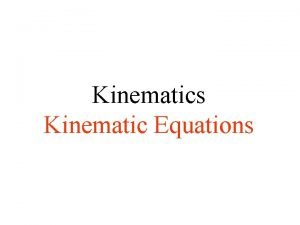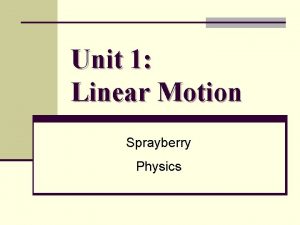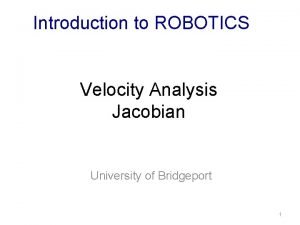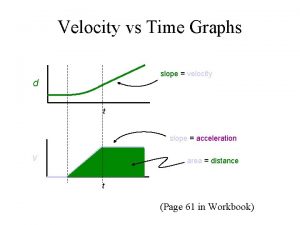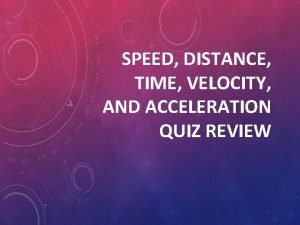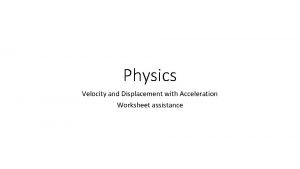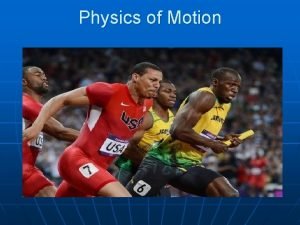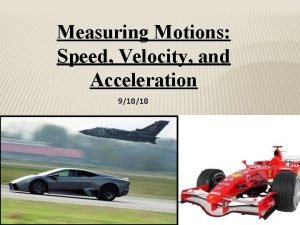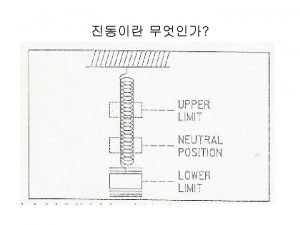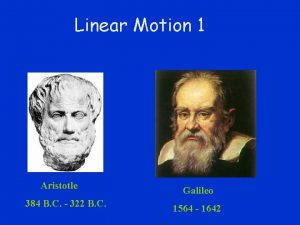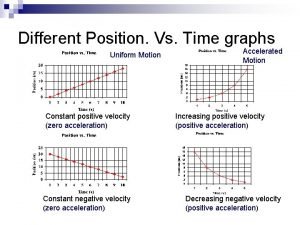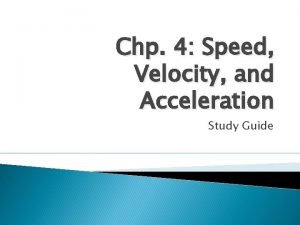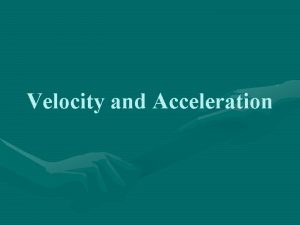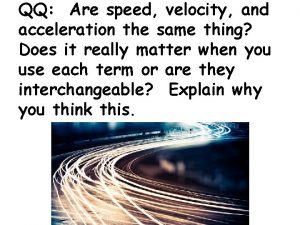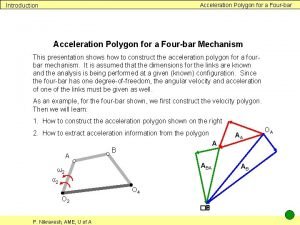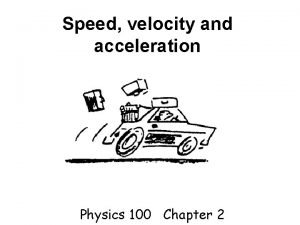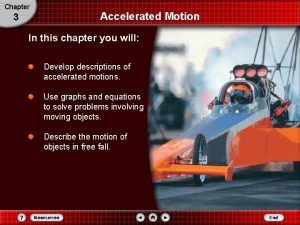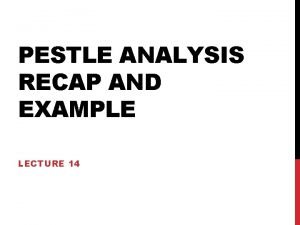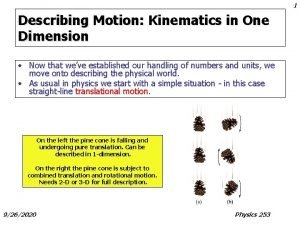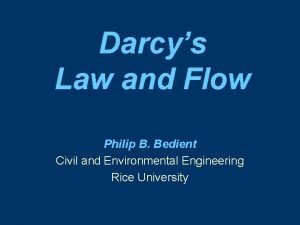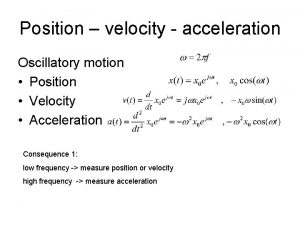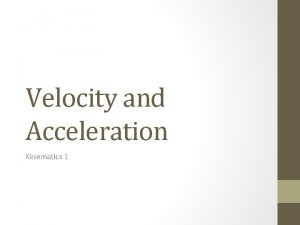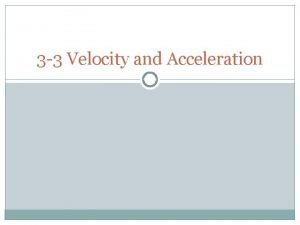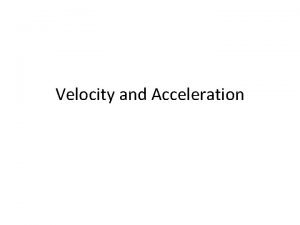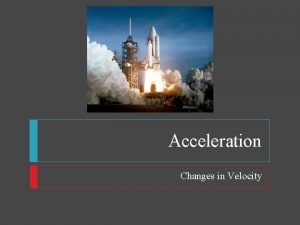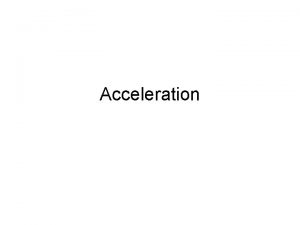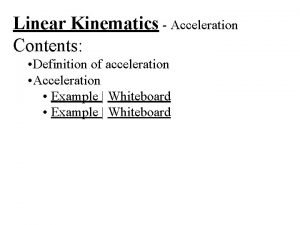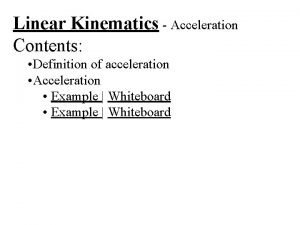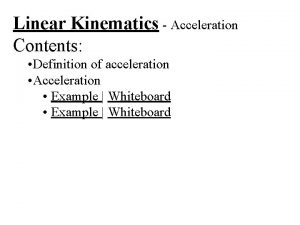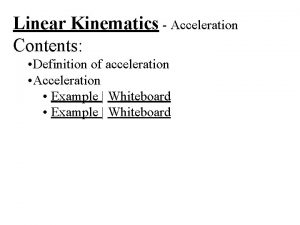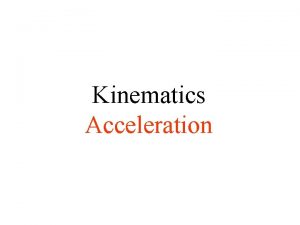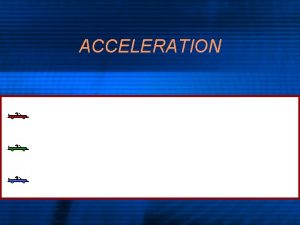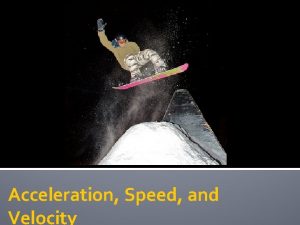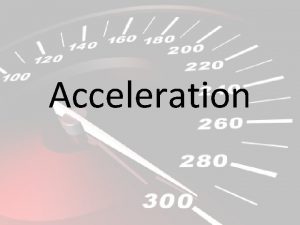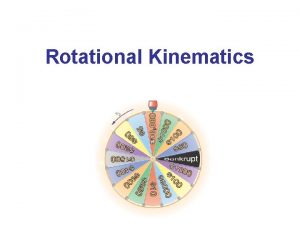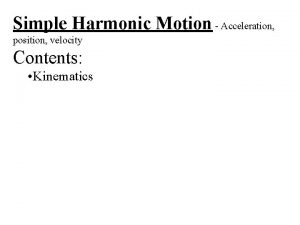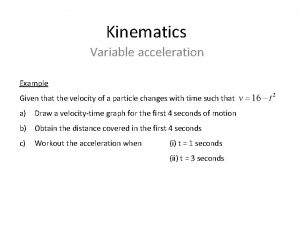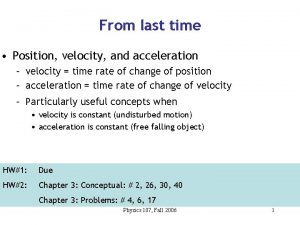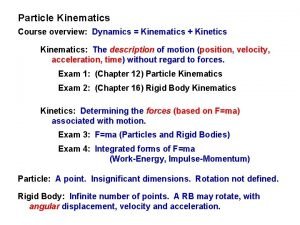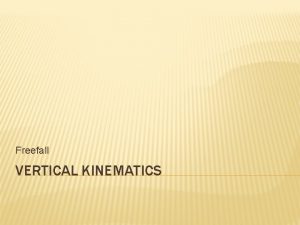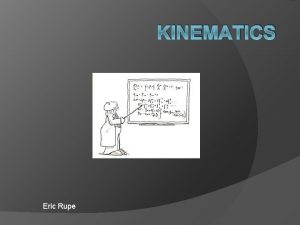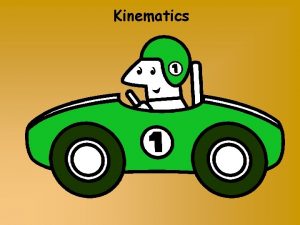Kinematics Position Velocity Acceleration Recap Position Example the













































- Slides: 45

Kinematics

Position, Velocity, Acceleration Recap Position – Example (the unit is in metres)

Example 1 –

Displacement and distance Displacement: – Change in position of the particle. – Distance with direction Scalar quantity: Distance Vector quantity: Displacement (which has direction) –

Velocity and speed Prior knowledge: You are already familiar with rates of change through your studies in Mathematical Methods – Velocity is a vector quantity. For motion in a straight line, the direction is specified by the sign of the numerical value. If the velocity is positive, the particle is moving to the right, and if tis negative, the particle is moving to the left. – A velocity of zero means the particle is instantaneously at rest.

Speed and average speed Speed is a scalar quantity; its value is always non-negative – Units of measurement –

Example 2 –

Example 3 –

Acceleration The acceleration of a particle is the rate of change of its velocity w. r. t time – Acceleration may be positive, negative or zero. Zero acceleration means the particle is moving at a constant velocity. The direction of motion and the acceleration need not coincide. For example, a particle may have positive velocity, indicating it moving to the right, but a negative acceleration, indicating it is soling down. Also, although a particle may be instantaneously at rest, its acceleration at that instant need not be zero. If acceleration has the same sign as velocity, then the particle is ‘speeding up’. If the sign is opposite, the particle is slowing down’.

Example 4 –

Example 5 –

Using antidifferentiation –

Example 6 –

Example 7 –

Constant Acceleration – 4. 3 –

Kinematics The study of the motion of objects Constant Acceleration Rectilinear motion: Objects that move along a straight line. – Formulas for constant acceleration – These four formulas are very useful and can only be applied when acceleration is constant. Tip: when solving problems with constant acceleration, list variables given with quantities, identify which quantity/quantities you need to find, select appropriate formula and solve. Note: Ensure that all quantities are converted to compatible units.

Example 9 –

Example 10 –

Example 11 A stone is thrown vertically upwards from the top of a cliff which is 25 m high. The velocity of projection of the stone is 22 m/s. Find the time it takes to reach the base of the cliff. (Give your answer correct to two d. p)

Motion under gravity – 9. 4 –

Motion Acceleration due to gravity Vertical motion: object is projected vertically into the air causing a one-dimensional movement along a straight line of force Earth’s gravity: most common force; Earth’s gravity is a vertical motion in relation to that gravity is towards to away from the centre of the Earth. Acceleration due to gravity: Form of acceleration that is directed towards the centre of the Earth. Approximately constant when an object’s motion is near the Earth’s surface. Vertical motion of an object in a straight line when acceleration is constant, equation for constant acceleration can be applied. –

Worked Examples (4. 3 - Jacplus) Worked Example 3 Worked Example 4 – –

Velocity-time Graphs 4. 4 Connections to the Study Design: AOS 3 – Differential Equation Kinematics – Use of velocity-time graphs to describe and analyse rectilinear motion.

Velocity-time graphs –

Properties of Velocity-time graphs – –

Example 12 –

Using integral notation –

Examples Example 13 – Example 14

Example 15 –

Example 16 –

Variable acceleration 4. 5 –

Variable acceleration When acceleration is not constant – –


Worked Example 7 –

Worked Example 8 –

Representation of acceleration – –

Worked Example 9 –



Examples Example 17 – Example 18 Example 19

Other expressions for acceleration –

Expressions of acceleration continued The different expressions for acceleration are useful in different situations. Given – Initial Conditions Useful Form

Examples Example 20 Example 22 – –

Example 21 –

Example 23 –
 Is v final velocity
Is v final velocity Site:slidetodoc.com
Site:slidetodoc.com Aplusphysics kinematics-horizontal kinematics
Aplusphysics kinematics-horizontal kinematics Position velocity acceleration graphs
Position velocity acceleration graphs Angular position velocity and acceleration
Angular position velocity and acceleration Kinematic equatiobs
Kinematic equatiobs Kinematics acceleration formula
Kinematics acceleration formula Kinematics of rigid body
Kinematics of rigid body Difference between velocity and acceleration example
Difference between velocity and acceleration example Jacobian matrix
Jacobian matrix Circular acceleration
Circular acceleration Angular acceleration formula
Angular acceleration formula Radial acceleration formula
Radial acceleration formula Linear acceleration
Linear acceleration Centripetal acceleration tangential acceleration
Centripetal acceleration tangential acceleration Area under velocity time graph
Area under velocity time graph Velocity and acceleration difference
Velocity and acceleration difference Velocity=distance/time
Velocity=distance/time Speed velocity and acceleration problems
Speed velocity and acceleration problems What is the si unit of relative velocity
What is the si unit of relative velocity Displacement and velocity worksheet
Displacement and velocity worksheet Difference between velocity and acceleration
Difference between velocity and acceleration Acceleration
Acceleration Velocity acceleration derivative
Velocity acceleration derivative Vibration displacement velocity acceleration
Vibration displacement velocity acceleration Velocity and acceleration difference
Velocity and acceleration difference Motion diagram physics
Motion diagram physics Negative velocity negative acceleration
Negative velocity negative acceleration Negative velocity negative acceleration
Negative velocity negative acceleration Speed velocity and acceleration study guide answers
Speed velocity and acceleration study guide answers Velocity and acceleration polygons
Velocity and acceleration polygons Velocity describes both speed and
Velocity describes both speed and Are speed and acceleration the same thing
Are speed and acceleration the same thing Speed, velocity and acceleration notes
Speed, velocity and acceleration notes The fan blade is speeding up. what are the signs of
The fan blade is speeding up. what are the signs of Velocity and acceleration polygons
Velocity and acceleration polygons Velocity and acceleration
Velocity and acceleration What is velocity
What is velocity Physics chapter 3 accelerated motion test
Physics chapter 3 accelerated motion test Logbook recap example
Logbook recap example Example of recap
Example of recap Hydraulic conductivity
Hydraulic conductivity Initial velocity and final velocity formula
Initial velocity and final velocity formula Instantaneous velocity vs average velocity
Instantaneous velocity vs average velocity Darcy's law
Darcy's law Rotational motion and the law of gravity
Rotational motion and the law of gravity



